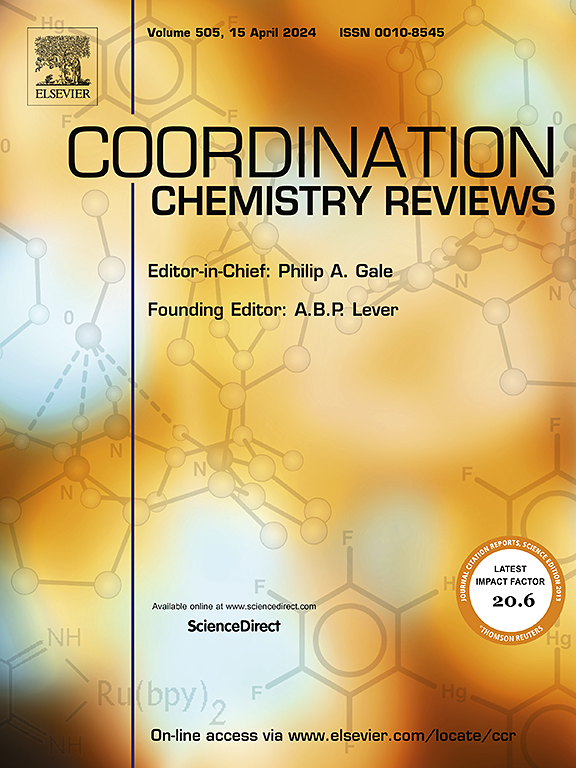Smart nucleic acid nanodrug delivery system for precision therapeutics
IF 20.3
1区 化学
Q1 CHEMISTRY, INORGANIC & NUCLEAR
引用次数: 0
Abstract
Nucleic acid nano carriers, characterized by programmability, degradability, and high biosafety, have found widespread applications across various fields. With the rapid advancement of nanotechnology, smart nucleic acid nanodrug delivery systems (NDDSs) have demonstrated significant potential for precise and safe therapy. This review summarizes the latest advancements in smart nucleic acid NDDSs, adopting a bottom-up approach. First, we summarize the fundamental functional nucleic acid units essential for realizing smart NDDSs, considering targeting, responsiveness, and therapeutic potential. These units are strategically incorporated into nanocarriers to develop functionally sophisticated smart NDDSs. Accordingly, we outline several construction strategies for self-assembled nanocarriers, such as Y(X)-shaped monomer self-assembly, rolling circle amplification (RCA), hybridization chain reaction (HCR), DNA origami, DNA polyhedron and hybrid assembly. Furthermore, we explore the diverse applications of smart NDDSs in drug delivery, encompassing small molecule drugs, nucleic acid drugs, protein drugs, and co-delivery systems. Finally, we discuss the challenges of clinical translation of smart nucleic acid NDDSs and future research directions. This review aims to deepen researchers' understanding of the design, construction, and potential applications of these systems, thereby advancing their clinical development and enhancing their effectiveness in precision medicine.

用于精准治疗的智能核酸纳米药物递送系统
核酸纳米载体具有可编程、可降解、生物安全性高等特点,在各个领域得到了广泛的应用。随着纳米技术的快速发展,智能核酸纳米药物递送系统(ndds)在精确和安全的治疗方面显示出巨大的潜力。本文采用自下而上的方法,综述了智能核酸ndds的最新进展。首先,我们总结了实现智能ndds所必需的基本功能核酸单位,考虑了靶向性、反应性和治疗潜力。这些单元被战略性地整合到纳米载体中,以开发功能复杂的智能ndds。因此,我们概述了几种自组装纳米载体的构建策略,如Y(X)形单体自组装、滚动圆扩增(RCA)、杂交链反应(HCR)、DNA折纸、DNA多面体和杂交组装。此外,我们还探讨了智能ndds在药物递送中的多种应用,包括小分子药物、核酸药物、蛋白质药物和共递送系统。最后,我们讨论了智能核酸NDDSs临床翻译面临的挑战和未来的研究方向。本文旨在加深研究人员对这些系统的设计、构建及其潜在应用的理解,从而促进其临床发展,提高其在精准医疗中的有效性。
本文章由计算机程序翻译,如有差异,请以英文原文为准。
求助全文
约1分钟内获得全文
求助全文
来源期刊

Coordination Chemistry Reviews
化学-无机化学与核化学
CiteScore
34.30
自引率
5.30%
发文量
457
审稿时长
54 days
期刊介绍:
Coordination Chemistry Reviews offers rapid publication of review articles on current and significant topics in coordination chemistry, encompassing organometallic, supramolecular, theoretical, and bioinorganic chemistry. It also covers catalysis, materials chemistry, and metal-organic frameworks from a coordination chemistry perspective. Reviews summarize recent developments or discuss specific techniques, welcoming contributions from both established and emerging researchers.
The journal releases special issues on timely subjects, including those featuring contributions from specific regions or conferences. Occasional full-length book articles are also featured. Additionally, special volumes cover annual reviews of main group chemistry, transition metal group chemistry, and organometallic chemistry. These comprehensive reviews are vital resources for those engaged in coordination chemistry, further establishing Coordination Chemistry Reviews as a hub for insightful surveys in inorganic and physical inorganic chemistry.
 求助内容:
求助内容: 应助结果提醒方式:
应助结果提醒方式:


